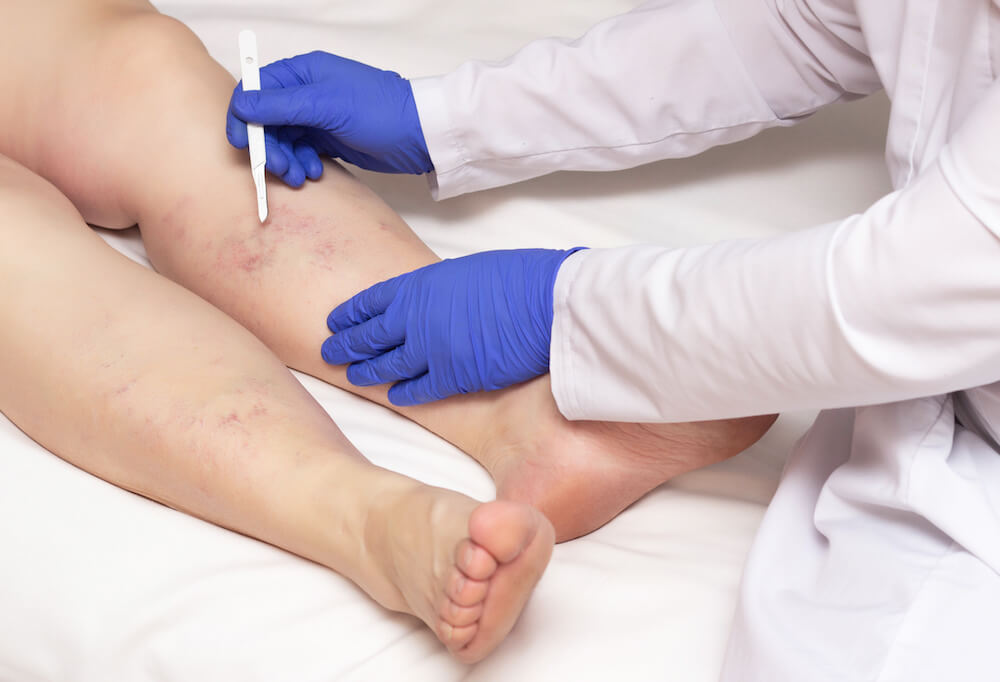Blood clots are a common health issue that affects a large portion of the population for a variety of different reasons. One of the most common causes is varicose veins. Apart from being unsightly, varicose veins also present other health and aesthetic issues to those that suffer from them.
Let’s explore what varicose veins are, what puts people at risk of varicose veins, and how they can relate to the risk of blood clot development.
What Are Varicose Veins?
If you don’t have varicose veins yourself, you’ve likely seen them on a family member or friend. Varicose veins are raised, bulging veins that are visible beneath the skin’s surface. They are usually found on the legs and often have a twisted appearance. These veins typically have a purple or blue color and can be more visible on lighter skin tones.
All of the veins throughout your lower body have valves that allow blood to flow from the legs back toward the heart, keeping the circulatory system in motion. Sometimes, however, certain factors will cause the valves to malfunction to a certain degree.
When this happens, blood is unable to effectively travel back to the heart, causing it to pool in the veins of the legs instead. The veins become twisted and visible beneath the skin. Their functionality is also significantly diminished.
Due to the effects of gravity, varicose veins are usually found in the lower extremities such as the legs, ankles, and feet. However, these veins can form in other regions of the body, as well.
Varicose Veins and Blood Clots
As the pooling of blood in the extremities causes veins to bulge and twist, the blood flow moving through them can become slow and sluggish. This is the factor that causes superficial blood clots, also referred to as superficial thrombophlebitis, superficial venous thrombosis, or simply phlebitis.
If left untreated, these clots can lead to side effects like swelling, pain, redness, and tenderness in the affected area.
Blood clots can be extremely dangerous because they can eventually travel into the lungs or even cause a pulmonary embolism. However, effects like these are typically associated with deep vein thrombosis, a condition that is often unrelated to the appearance of varicose veins.
Though varicose veins typically don’t put patients at risk for blood clots in the lungs or heart, make sure to consult a doctor to monitor your condition.
Risk Factors and Symptoms
Varicose veins can be inherited genetically. However, there are many external risk factors for varicose veins, as well, which include:
- Being overweight
- Inactivity
- Pregnancy
- Overactivity
- Smoking
Additionally, women are naturally at higher risk for varicose vein development. In addition to the visible symptoms of varicose veins, some patients experience skin tone changes near the site, rashes, and sores. Some patients may also experience burning or aching in the lower extremities due to poor blood flow.
It’s time to treat your varicose veins for good. Contact Metropolitan Vein and Aesthetic Center to get started today.


